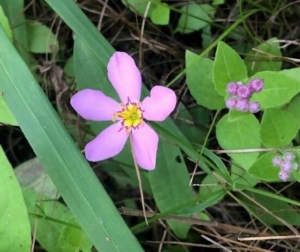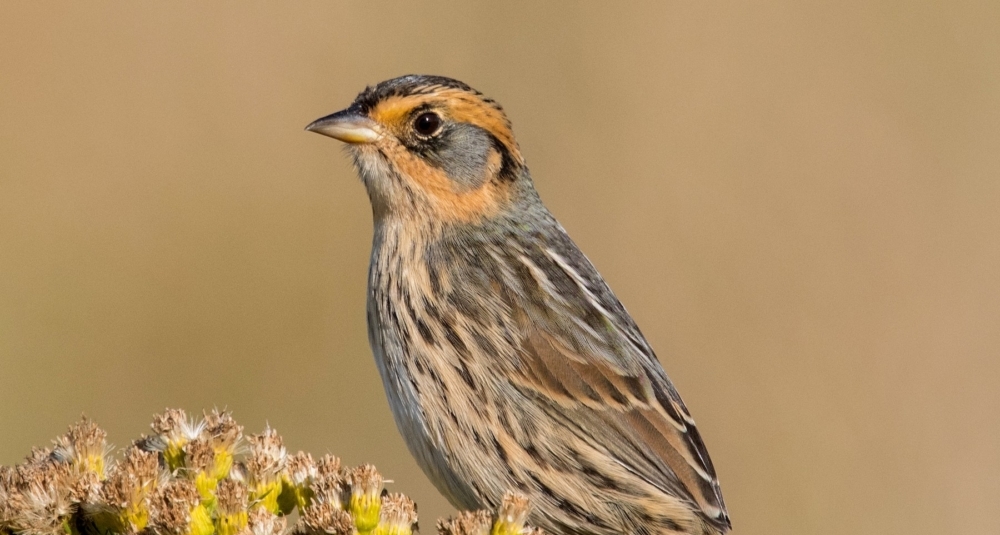
Great Meadows Marsh
Sources: Town of Stratford; Audubon Connecticut; Coast Magazine.
Great Meadows Marsh (GMM), located in the Stewart B. McKinney National Wildlife Refuge, is one of Connecticut’s largest salt marshes and contains the largest remaining mostly un-ditched marsh in the state, approximately 225 acres.
What is Good About It?
- The Great Meadows Unit includes a barrier beach, tidal wetland, ditched salt marsh, filled wetland, and upland.
- The area also has several small fresh or brackish ponds, salt pannes (water retaining depressions), and tidal mud and sand flats.
GMM is connected to Long Beach by Lewis Gut, an estuarine embayment fed from several freshwater creeks and the waters of Long Island Sound (LIS) through Bridgeport Harbor. The barrier beach protects the Lewis Gut abayment from the wave action from Long Island Sound and has long been used as a seed bed area by local shell fishermen. Neck Creek connected the Gut to the Housatonic River until the 20th century.
The area north and west of Lewis Gut contains the only unditched high marsh left in the state. It encourages transient shorebirds and waterfowl to breed and feed.
Did you know that salt marshes have suffered losses of over 75% between 1900 and 1970 and continue to decline at rates of 0.5 to 3% per year*?
The impacts of these losses are many and growing. Saltmarsh Sparrow populations have declined by over 80%, and may go extinct in our lifetime. Unhealthy marshes will no longer provide important buffers for local communities against major storms. Before it’s too late for birds and people, Audubon and partners across the coast are taking action on-the-ground.
Local birders, fishermen, and wildlife enthusiasts know the site well, as a special place to spot the rare Snowy Owl or catch Striped Bass. It is also important habitat for horseshoe crabs and blue crabs, the beautiful and endangered Marsh Pink flower, Saltmarsh Sparrow and other migratory birds, and fish like Atlantic Silverside and Menhaden.
Great Meadows Marsh Facts
In the mid-1800s GMM was a back-barrier salt marsh of more than 1400 acres, the marsh is now less than 700 acres and portions of it no longer function properly due to dredged soils brought in as fill, colonization by non-native plants, and sea-level rise. The degraded marsh produces abundant mosquitoes that have plagued locals and visitors for years
GMM provides critical habitat for a diversity of wildlife species including rare plant species, several species of finfish, and approximately 270 bird species. The birds utilize GMM for nesting, overwintering, and stopover during migration, including many federal and state species of concern. This includes the Saltmarsh Sparrow, a species that nests exclusively in marshes from Maine to Virginia and is considered one of the most specialized tidal marsh nesting birds globally.
Approximately 270 species of birds can be seen at different times of the year. Great Meadows March was once described by Roger Tory Peterson as one of the best coastal bird habitats in the United States.
GMM is part of the Stewart B. McKinney National Wildlife Refuge, and last fall shovels were in the ground for restoration of up to 33 acres of salt marsh. The current restoration project underway will amplify the effects of several community resiliency activities outlined in the Town of Stratford’s 2016 Coastal Resiliency Plan.
Work activities including removing invasive plant cover, regrading and reusing dredged fill soils with specific target elevations designed to create conditions to support native plant species, as well as birds such as Saltmarsh Sparrow, while accounting for sea level rise estimates.
The restoration is scheduled to be substantially completed during April 2022.
Once restoration work is completed, a team of scientists will conduct monitoring of the restoration, including essential acres restored habitat cover and species composition and health collectively and by specific habitats, restored tidal hydrology, and changes in rare plant and animal populations endemic to the site.
Since the project was announced in 2019, it has grown to represent a $4.1M investment in Connecticut’s coastline. Just over $1M was originally raised for the effort; it now includes an additional $3.07M in funding from the U.S. Fish and Wildlife Service, the U.S. Environmental Protection Agency, The Nature Conservancy, the Robert F. Schumann Foundation, and the Jeniam Foundation. Initial funding came from three natural resource damage case settlements related to contaminated sites close to the area: Raymark Industries, Lordship Point Gun Club, and the Housatonic River/General Electric cases. These case settlements supported planning and engineering, and leveraged funds for the project construction and future monitoring.
Audubon Connecticut, the National Oceanic and Atmospheric Administration, Connecticut Department of Energy and Environmental Protection, and U.S. Fish and Wildlife Service are collaborating on this exciting local restoration project. In addition to managing the construction, Audubon will offer opportunities for the community to get involved, primarily through planting native grasses and shrubs in spring.
“This is an exciting day for the Great Meadows Marsh project and all those who have spent years working toward this groundbreaking. As the state’s largest marsh restoration project, this will be a major investment in the health of Connecticut’s coastline. In the Senate, I’m continuing to fight for more funding to protect the Long Island Sound, support conservation efforts, and strengthen coastal resilience,” said Senator Chris Murphy.
“The most exciting part of the project, from the perspective of protecting birds, will be when we test a fairly new strategy to create nesting habitat for the Saltmarsh Sparrow. This critically-threatened bird relies on healthy high marsh habitat to survive, and unfortunately our coastlines and their associated marshes are being squeezed by rising sea levels and human development,” said Corrie Folsom-O’Keefe, director of conservation for Audubon Connecticut. “As part of the restoration, we will create hummocks, or small mounds of earth, and plant them with salt marsh grasses, creating higher elevation areas for the birds to nest in. If effective, this strategy could be expanded to other marshes across Connecticut and beyond.”
Expected Project Outcomes Include:
- Mosquito populations reduced and human health concerns addressed. A more natural ebb and flow of salt water in and out of the marsh with the tides – rather than pools of sitting water – will reduce breeding grounds for mosquitoes.
- Native marsh vegetation and wildlife habitat re-established. ~170,000 native coastal plants and shrubs will be planted across 15 acres.
- Bird and other wildlife habitat created and/or improved. A new strategy will be tested to create Saltmarsh Sparrow nesting habitat. If effective, it could be expanded coast-wide.
- Fish and other aquatic habitat restored and/or improved. Soil fill and invasive plants will be removed to restore habitats for a variety of fish, crabs, and other aquatic animals that call saltmarshes and their creeks home.
- Improved access for the community. A long-closed trail will re-open, and one viewing platform will be removed and replaced with two new ADA-accessible platforms.
- Compensating for the impacts from pollution. Settlement funds from polluters that damaged the environment were leveraged to support these restoration efforts.
“The Great Meadow Marsh project will restore significantly degraded coastal marsh habitat and result in improved wildlife habitat. I am very pleased to know that as part of this project, Audubon Connecticut will be seeking to employ youth from the Bridgeport / Stratford area to help educate people about the benefits this project will bring to our community,” said State Representative Joe Gresko.
“Restoration of the Great Meadows Marsh is a significant environmental accomplishment, thanks to years of tireless dedication by many. The Office of the Attorney General, in conjunction with our federal and state partners, always seeks to restore and support our vital natural resources. I am pleased to see funding from previous contamination cases directed to this critical work,” said Attorney William General Tong.

